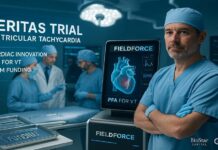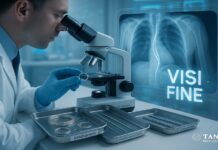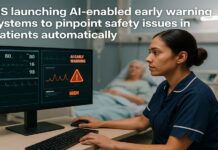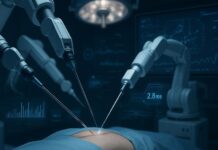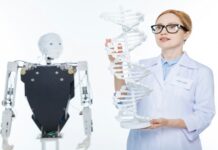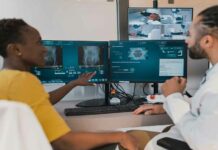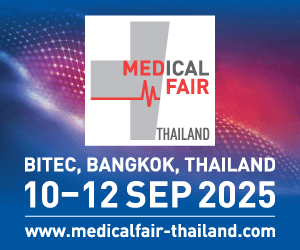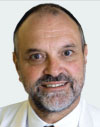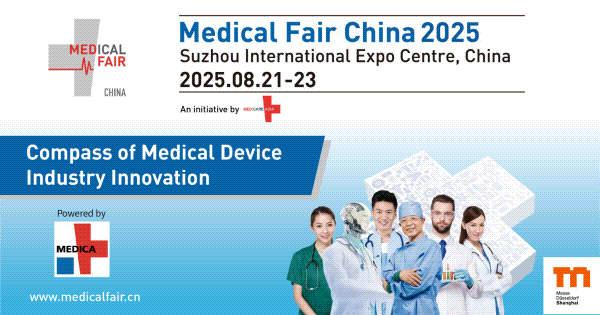Que. 1. In a nutshell, what is PET/CT used for? What are its applications and how is this different from PET/CT+MR?
Ans. PET/CT is currently THE established integrated clinical molecular imaging modality used worldwide for tumor staging and therapy monitoring in a vast majority of malignant tumors. Additional indications for PET/CT are in imaging of inflammation. The current use of PET/CT in the clinical evaluation of brain disease and heart disease is limited. In the brain, image fusion of PET and MR data obtained on separate systems is a standard accepted procedure and in the heart, fusion of PET and CT data is of limited value. If required in the latter disease entities, integration can also be achieved by software fusion.
PET/CT-MR is an experimental system designed to evaluate whether there are future applications of PET/MR which are more accurate (higher sensitivity and specificity) than PET/CT. Currently, there is no clinical data which would suggest that PET/MR can replace PET/CT in clinical applications. Rather, the current workup in cancer imaging involves PET/CT followed or preceded in some settings by a dedicated MR scan focused on a specific question such as better identification and characterization of liver lesions.
Que. 2. What are the potential implications of this on current and future clinical care developments?
Ans. Potential implications are that running larger patient series using PET/CT-MR will define whether and where replacement of PET/CT by PET/MR is beneficial. If indeed it is possible to demonstrate that in certain disease entities PET/MR is more accurate (specific and sensitive) than PET/CT, PET/MR will replace PET/CT in such applications.
Que. 3. Are there potential drawbacks or side effects to a PET/CT scan and a PET/CT+MR scan?
Ans. The main drawback of a PET/CT scan is its radiation dose. Replacing the CT portion by MR will eliminate the CT radiation portion, which is typically 20-50 percent of the radiation burden of a PET scan. While this is not relevant in many patients suffering from malignant tumors, it may well be relevant in patients suffering from inflammatory disease and in the pediatric population. As stated above, a PET/CT-MR scan is a research mode designed to explore where PET/MR may be superior to PET/CT imaging.
Que. 4. What, according to you, are the challenges we face with the onset of PET/CT +MR scan?
Ans. The major challenge of a PET/CT-MR scan is that it is a lengthy procedure with high cost, as it really requires that all three modalities are used and potentially billed to the patient resulting in increasing healthcare costs. But as stated above, this combination is designed mainly to evaluate whether and where the CT portion of the examination can be entirely replaced by MR.
Que. 5. Since molecular imaging is a rapidly evolving field, where do you expect to see it a few years from now?
Ans. Molecular imaging has made major inroads in tumor staging and therapy monitoring and is bound to evolve further in this field.
The most prominent foreseeable clinical application of PET will be in the earlier diagnosis of dementia. Whether, and in which form, PET/MR will be relevant in this application, has to be proven clinically. However, PET/CT seems not to be providing any major advantage over PET alone in this disease entity. MR is the anatomic method of choice in dementia and so a combination of PET and MR in these diseases may be beneficial. However, whether simultaneous PET/MR, sequential PET-MR or separate PET and MR supported by software image fusion will be the most appropriate way to clinically evaluate patients with dementia is currently not known. Systems such as PET/CT-MR are ideal systems to evaluate what kind of combination of imaging will be needed.
Research applications of PET as a molecular imaging tool in combination with CT or MR are innumerous and it is assumed that much of imaging research will focus on how to use these imaging tools in the next ten years. In the quest of understanding the role of PET, CT and MR in the research fields of oncology, inflammation, brain and cardiovascular disease it will also become clear, which kind of integrated imaging can be used to better advantage in these disease entities in a clinical setting.
The PET/CT market is defined by four major trends, each of which brings a significant element of technology advancement with it.
• The first is the broadening acceptance of PET/CT as an important tool in the diagnosis and staging of cancer. As the recognition of the value of PET/CT in treatment planning for cancer grows, there will be a strong need for technologies that improve the accessibility of this diagnostic tool through lower capital and operating costs, easier usability, and tools to reduce variability in the exam reads.• The second trend is the use of PET/CT in therapy monitoring. That has tremendous potential to improve both the quality and cost, and personalize the care that cancer patients get by being able to assess if a particular treatment regime is being effective for that patient in much shorter time than currently done with other imaging modalities. Techniques that improve quantitative accuracy, effective motion management to reduce variability, and lesion tracking are technologies that will have a significant impact on therapy monitoring.• The third is the research and development of new PET tracers to expand the reach of PET beyond oncology imaging based on FDG. While very effective in many oncology applications, use of FDG on PET/CT has some well-known limitations in certain applications, like imaging of the liver, prostate, certain brain metastasis, neurological disorders, and some cardiac imaging. There is a lot of exciting research work on both molecules and clinical applications which will further expand the utility of PET/CT imaging.• The fourth, equally important trend is the emergence of the new hybrid modality combining PET and MR. Combining the information from PET and MR, or combining them into one piece of equipment, is a technology challenge but the real advancement is in understanding what the clinical utility of the combined information is going to be, and whether it can be done in a cost effective way.There are two distinct technology solutions that enable researchers to answer the question about the clinical value of combining PET and MR.
1. The first approach commonly referred to as the sequential solution is one where the patient is held in a fixed position while being moved between the PET and MR scans, and the images obtained fused with advanced software algorithms. This approach provides clinicians with the ability to answer a majority of their questions about the value of PET and MR compared to the existing standard of PET/CT, and doing it in a cost effective way.2. The other approach is to combine the PET and MR into a single machine, which has the advantage of offering simultaneous imaging for some high end research involving specialized tracers where the clinical value is still to be established.- Within the group of simultaneous systems there are two distinct approaches — Whether the PET detector is based on APD (avalanche photo diodes) or SSPM (Solid State or Silicon Photo Multiplier). While both of them have the advantage of being capable of operation in an MR environment, the difference is in the performance of the PET detectors where SSPM has the advantage of much higher gains and capability of doing TOF (time of flight) imaging that has become a key feature for a lot of the research work around the world. The clinical and research community, through various publications, has been pretty open that the benefits offered by SSPM (alternately referred to as SiPM) make it the detector of choice for a combined PET and MR system going forward which many groups are working on, and a system based on it is eagerly awaited.



